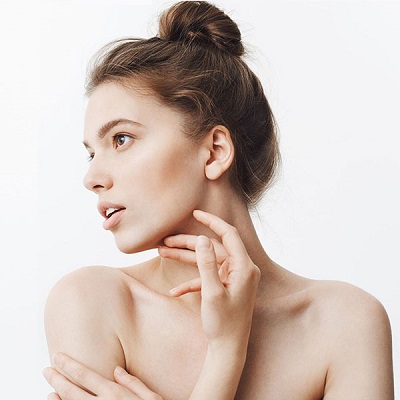Introduction
In recent years, the aesthetic industry has witnessed a significant rise in non-surgical procedures, particularly dermal fillers aimed at enhancing facial features. Among these, jawline fillers have gained popularity as individuals seek to achieve a more defined and contoured appearance. This trend is not confined to any specific region but transcends cultural boundaries. In Oman, where traditional beauty standards are deeply intertwined with cultural heritage, the perception of jawline fillers presents a fascinating interplay between modern aesthetic desires and long-standing cultural values. This article explores the growing trend of Jawline Fillers Injections in Oman, examining cultural perceptions, societal influences, and the implications of these cosmetic enhancements.
Understanding Jawline Fillers
Jawline fillers are injectable substances used to enhance the contour of the jawline, providing a sharper, more defined look. These fillers, often made of hyaluronic acid, are designed to add volume, improve symmetry, and restore facial structure that may have diminished with age. The non-invasive nature of the procedure, coupled with minimal downtime, makes it an appealing option for those seeking aesthetic enhancement without the commitment of surgical intervention. As more individuals in Oman embrace this trend, it raises questions about the cultural significance of such modifications and how they align with traditional notions of beauty.
Cultural Significance of Beauty in Oman
Beauty standards in Oman, like in many cultures, have evolved over time, influenced by a variety of factors including geography, history, and societal norms. Traditionally, Omani beauty ideals have celebrated natural features, with an emphasis on symmetry, healthy skin, and cultural attire. The concept of beauty in Oman often reflects a connection to one’s heritage and identity, intertwining with customs and traditions.
In recent years, however, globalization and exposure to diverse beauty standards through social media have led to a shift in perceptions. Young Omanis, particularly women, are increasingly drawn to contemporary beauty trends that emphasize defined facial features. This shift can be attributed to the desire to fit into a global narrative of beauty that prioritizes facial symmetry and contouring, often showcased by public figures and influencers. The acceptance of jawline fillers reflects a growing inclination towards self-enhancement and the pursuit of idealized beauty.
Societal Influences on the Adoption of Jawline Fillers
The decision to undergo cosmetic procedures, including jawline fillers, is often influenced by various societal factors. In Oman, family, peers, and social media play pivotal roles in shaping individual perceptions about beauty and aesthetics. The rise of beauty influencers on platforms like Instagram and TikTok has created a digital culture where specific beauty ideals are propagated and normalized.
For many young Omanis, the allure of jawline fillers may stem from the desire to emulate admired figures within their social circles or on social media. This phenomenon creates a pressure to conform to contemporary beauty standards, leading individuals to seek cosmetic enhancements as a means of self-expression and self-improvement. Furthermore, the endorsement of such procedures by local celebrities can lend credibility to their appeal, making them more acceptable within the cultural context.
Challenges and Stigmas
Despite the increasing popularity of jawline fillers in Oman, challenges and stigmas persist. Traditional beliefs about beauty may conflict with the contemporary narrative of self-enhancement. Some segments of society still perceive cosmetic procedures as superficial or indicative of low self-esteem. These stigmas can lead to feelings of guilt or shame among those considering or undergoing such treatments.
Additionally, concerns regarding safety, ethics, and the long-term effects of cosmetic enhancements contribute to hesitancy. In a culture where natural beauty has historically been celebrated, the shift towards cosmetic interventions may provoke debates about authenticity and self-acceptance. As individuals navigate these complexities, the interplay between traditional values and modern aesthetics remains a central theme in the Omani context.
The Future of Jawline Fillers in Oman
Looking ahead, the trend of jawline fillers in Oman is likely to continue its upward trajectory. As societal norms evolve, so too will the perceptions surrounding cosmetic procedures. Education about the safety and efficacy of these treatments will be crucial in addressing concerns and dispelling myths. Moreover, as more local practitioners gain experience and expertise in administering fillers, the acceptance of these procedures is expected to grow.
The emergence of a more open dialogue regarding beauty standards and self-enhancement can lead to a more inclusive understanding of aesthetics. This evolving narrative may eventually foster an environment where individuals feel empowered to make choices about their appearances without fear of judgment.
Conclusion
The rising popularity of jawline fillers in Oman reflects a broader cultural shift towards modern beauty ideals, driven by globalization and the influence of social media. While traditional notions of beauty continue to hold significance, the embrace of aesthetic enhancements signifies a desire for self-expression and individuality. As Omani society grapples with the complexities of beauty standards, it is essential to foster discussions that bridge the gap between traditional values and contemporary aesthetics. Ultimately, the journey toward self-acceptance and empowerment in one’s appearance will define the future landscape of beauty in Oman.





Comments